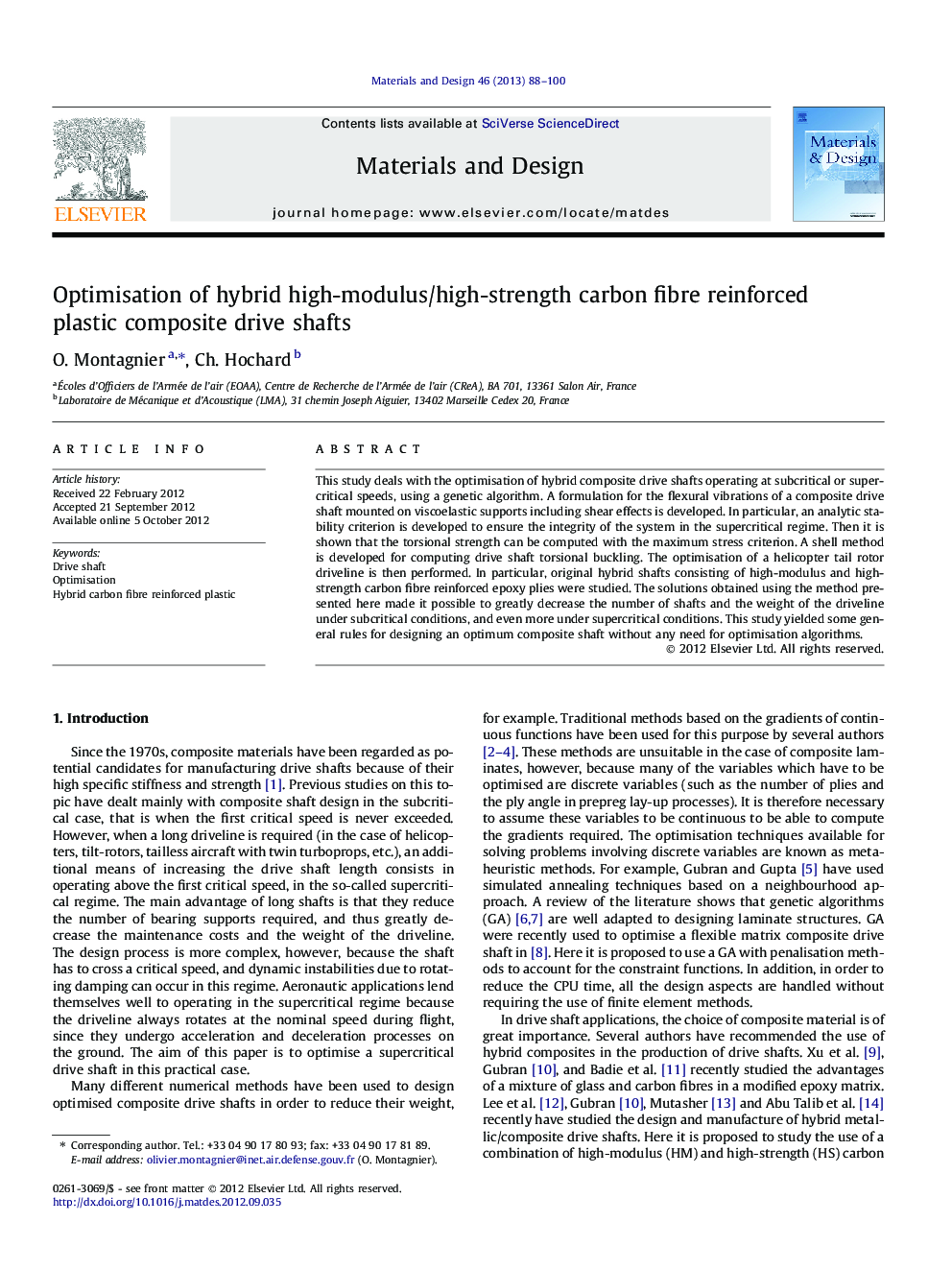| کد مقاله | کد نشریه | سال انتشار | مقاله انگلیسی | نسخه تمام متن |
|---|---|---|---|---|
| 830126 | 1470351 | 2013 | 13 صفحه PDF | دانلود رایگان |

This study deals with the optimisation of hybrid composite drive shafts operating at subcritical or supercritical speeds, using a genetic algorithm. A formulation for the flexural vibrations of a composite drive shaft mounted on viscoelastic supports including shear effects is developed. In particular, an analytic stability criterion is developed to ensure the integrity of the system in the supercritical regime. Then it is shown that the torsional strength can be computed with the maximum stress criterion. A shell method is developed for computing drive shaft torsional buckling. The optimisation of a helicopter tail rotor driveline is then performed. In particular, original hybrid shafts consisting of high-modulus and high-strength carbon fibre reinforced epoxy plies were studied. The solutions obtained using the method presented here made it possible to greatly decrease the number of shafts and the weight of the driveline under subcritical conditions, and even more under supercritical conditions. This study yielded some general rules for designing an optimum composite shaft without any need for optimisation algorithms.
► Hybrid high-modulus/high-strength CFRP composite shafts are studied.
► Subcritical and supercritical cases (including damping instability) are studied.
► A composite shell method is proposed to solve the torsional buckling problem.
► A genetic algorithm is used to optimise the carbon/epoxy driveline.
► The hybrid shafts are particularly well adapted to maximise the shaft length.
Journal: Materials & Design - Volume 46, April 2013, Pages 88–100